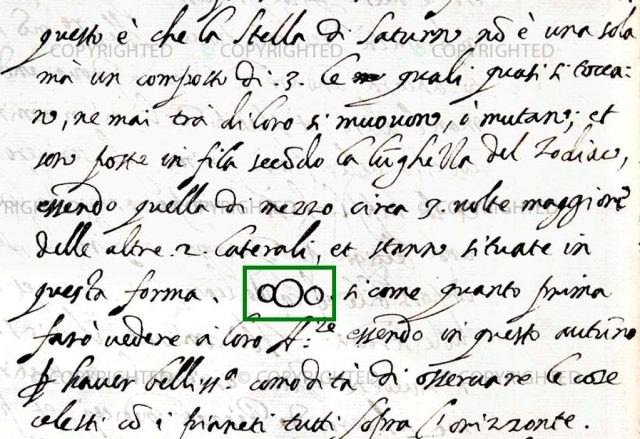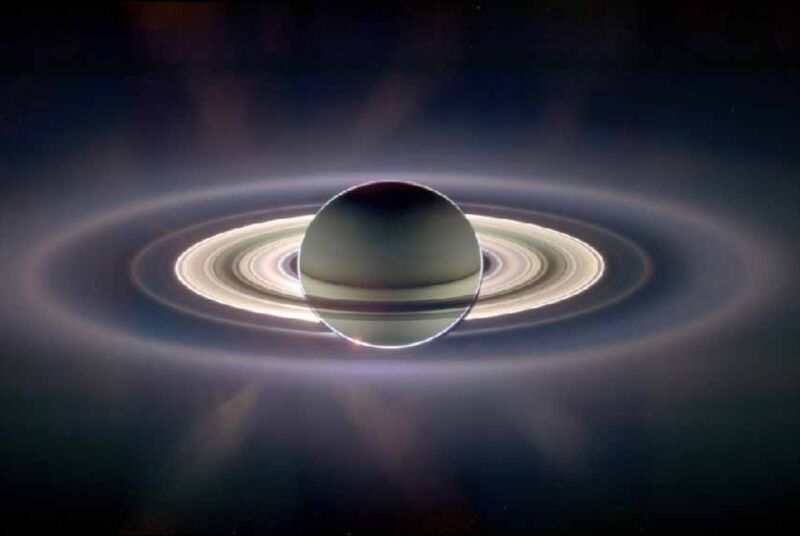Astronomers had long assumed that Saturn's distinctive rings formed around the same time as the planet some 4.5 billion years ago in the earliest days of our Solar System. That assumption received a serious challenge from a 2019 analysis of data collected by NASA's Cassini spacecraft, suggesting that the rings were just 10 million to 100 million years ago—a mere blink of an eye on cosmic time scales. Now, a fresh analysis of data on how much dust has accumulated on the rings confirms that controversial finding, according to a new paper published in the journal Science Advances.
"In a way, we’ve gotten closure on a question that started with James Clerk Maxwell,” said co-author Sascha Kempf, an astronomer at the University of colourado, Boulder. In 1610, Galileo Galilei was the first to observe the rings, though his telescope was too crude to identify them as actual rings. He described them as "Saturn's ears" since they looked like two smaller planets on either side of Saturn. Galileo was bemused when the "ears" vanished in 1612 as the Earth passed through the ring plane, even more so when they became visible again the following year.
Christopher Wren suspected that Saturn had a ring in 1657, though Christiaan Huygens beat him to publication, suggesting the ring was detached from the planet in his 1659 treatise System Saturnium, which also noted his discovery of Saturn's moon, Titan. Robert Hooke noticed shadows on the rings. By 1675, Giovanni Cassini had figured out that the ring was a series of smaller rings with gaps between them. Over a century later, Pierre-Simon Laplace would mathematically demonstrate that any solid ring would be unstable. Maxwell determined that the "ring" had to be made up of lots of small particles, all independently orbiting Saturn, confirmed by observations in 1859. We now know those particles are almost entirely made up of water ice.
The Space Age made it possible to send probes to explore our Solar System, and Pioneer 11, Voyager 1, and Voyager 2 all sent back increasingly detailed images of the ringed planet. Then in 1997, NASA launched the Cassini orbiter, a joint venture with the European Space Agency to probe Saturn, its moons, and its ring system. Cassini spent 13 years orbiting the gas giant doing just that, offering up stunning images of unprecedented resolution, as well as a host of scientific insights—including evidence that so-called "ring rain" falling onto the planet might cause the rings to gradually vanish in less than 100 million years.

Among the instruments onboard Cassini was the Cosmic Dust Analyzer, whose data showed that the rings are being slowly but steadily polluted by a mix of rocky dust and other organic compounds—mostly coming from micrometeoroids in the Kuiper Belt. “Think about the rings like the carpet in your house,” said Kempf. “If you have a clean carpet laid out, you just have to wait. Dust will settle on your carpet. The same is true for the rings.” That's relevant because one argument for a young age is that the water ice in Saturn's rings is remarkably bright and pure for structures presumed to be 4.5 billion years old. Accumulated layers of dust should have darkened them much more.
During its spectacular "Grand Finale" in 2017, Cassini performed 22 dives between Saturn and its rings, enabling scientists to determine the mass of both before the spacecraft plunged to its fiery death in the gas giant's atmosphere. That Cassini data is what Luciano Iell of Sapienza University in Rome and his co-authors relied upon for their 2019 paper since it let them determine the amount of soot on the rings, the rate at which it is falling, and the age of the dust. They concluded that the rings were no more than 100 million years old, emerging at a time when dinosaurs still roamed the Earth—a vivid detail that launched a thousand headlines and helped the notion gain a stronghold in the popular imagination. They also found that Saturn's B Ring was massive enough to dilute infalling dust, which would explain the relative purity of the icy particles.
Those results were met with skepticism by some, given the many uncertainties. Among the skeptics was Aurelien Crida, a planetary scientist at the Cote d'Azur Observatory, who published a rebuttal to Iell et al. later that year in Nature Astronomy. To explain the lack of dusty buildup on the rings, Crida suggested that a kind of planetary "scrubber" was preferentially removing dust from the rings via the ring rain. Cassini's data showed that this rain contained only 24 percent ice, compared to the rings themselves, which are 95 percent ice. Crida found a possible candidate for this scrubbing mechanism in a 2017 paper by Kempf's group (published in the same special issue of Science), noting the presence of nanograins merging from the main rings flowing into Saturn.



3175x175(CURRENT).thumb.jpg.b05acc060982b36f5891ba728e6d953c.jpg)

Recommended Comments
There are no comments to display.
Join the conversation
You can post now and register later. If you have an account, sign in now to post with your account.
Note: Your post will require moderator approval before it will be visible.